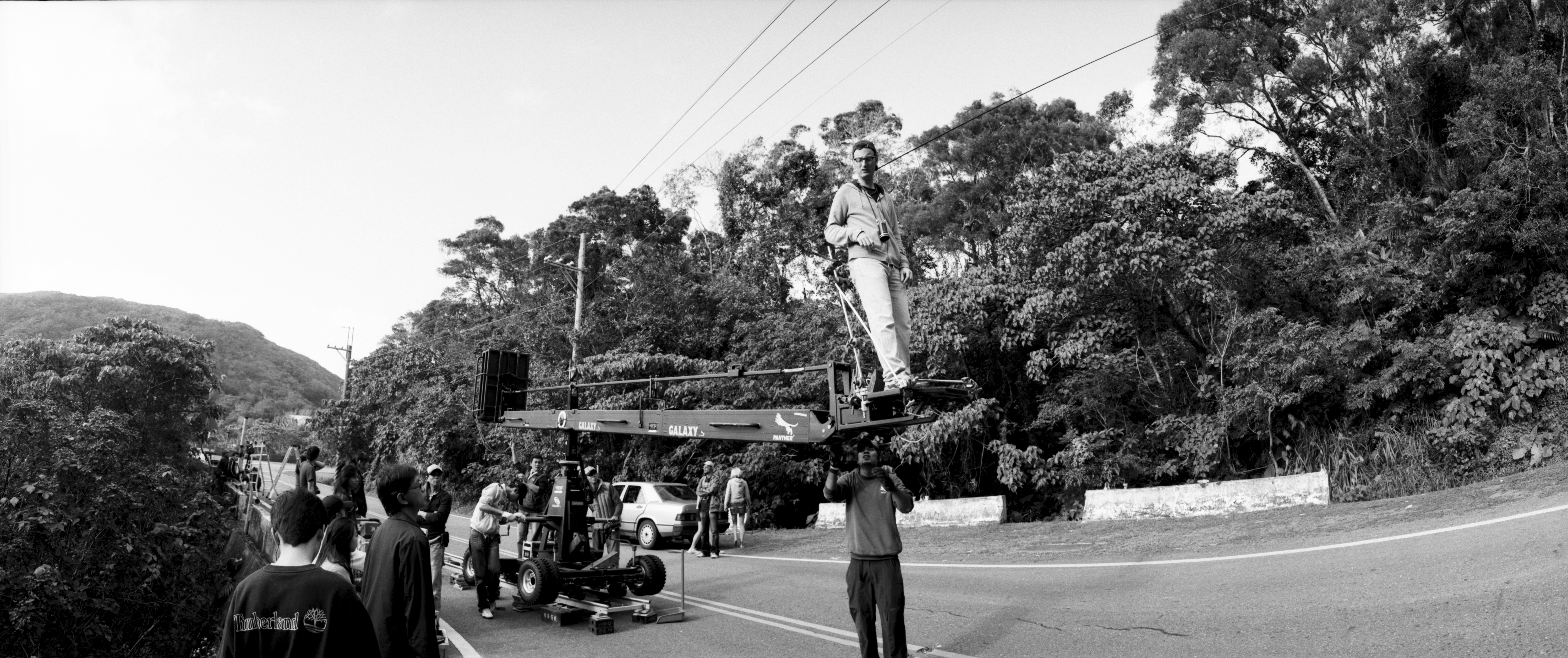Jake Pollock's cinematography on "Summer Afternoon" has been praised:
"masterful" (International Film Festival of Rotterdam)
"a technical feat" (Twitchfilm.net)
"tour de force" (Vancouvcer International Film Festival)

Our lab partner in Taiwan, Modern Cinema Laboratory, is updating its bilingual website
(The current one with Mandarin only http://www.modern-cinema.com/modern_index.htm)
They ask Jake to write about his cinematography on "Summer Afternoon".
Jake's article (in original English and Chinese translation) will be included in the website.
Meanwhile, the English article, with Modern's permission, can be viewed first-look here:
(warning: this article can be technical for layman)
When director Widing Ho first told me about his concept for Summer Afternoon, I knew I
had my work cut out for me. Three actors inside a car on a bright summer afternoon, the camera follows the car down a stretch of highway. As soon as one exits the car, the camera follows her to a shadowy ditch. One shot. Nowhere to hide lights. How to shoot the scene so that you can always see the actors’ performance, never too dark and never too blown out? And all the while the cinematography isn’t allowed to call attention to it self. Should be almost invisible.
We spent some time after scouting locations to plan how to stage the action and at what time of day to shoot so that the sun would always be in a favorable spot for the scene. Most people automatically think of high contrast when they think of black and white; however, I had to figure out how to control the contrast so that we could see as much into the shadows and as far into the highlights as possible. To extend the grey scale beyond normal while still obtaining a rich print.
Modern Labs and chief lab supervisor Ali were instrumental in helping me figure out which film stock, processing, and printer lights would best suit our needs. Lately, I like to work backwards when making these decisions. By trying to establish a low printer light, I knew I’d be stretching the contrast range of the film further than if I printed around 25-25-25. We shot three rolls each of Plus-X and Double-X, and each roll was printed to a different Gamma (0.4, 0.6, 0.8) a little bit like pulling 1-stop, normal, and pushing-1 stop. And in the tests we tried different black and white filters, from Yellow 15, Orange 21, Red 23A, and Green 56.
We quickly decided that the Red 23A helped control the lush tree foliage while making the skin tones pop a little more in the frame. We also decided that the grain structure of Double-X was too funky for us. The grain seemed stronger in the skin tones than in the darker tones. It almost seemed like there was only grain in the skin tones and sky, which would call attention away from the performances. Even though it was a bit daunting, we settled on shooting Plus-X 5231 and processing at 0.4 Gamma. By exposing around 40ASA, I was able to get a good image while printing around 20-20-20. (in the end, we printed mostly around that range, but also had moments as low as 14-14-14!)
In the end, all of our planning worked differently than expected. We hoped for strong sunlight, but instead got clouds that would come in and out during the shot! However, the super-low contrast of our exposure/processing system helped keep everything visible within the chaos. At the end we did four long takes. Two were processed at 0.4 Gamma, one at 0.6 Gamma (in addition to an establishing shot), and one at 0.8 Gamma.
Post-production for Summer Afternoon was amazingly simple. After printing part of the first shot, we knew exactly how to evaluate the image on the Hazeltine, which allowed us to make an almost perfect first print. The only changes we made between prints was to tweak a few spots. Even though the film only has one establishing shot and four long takes, we changed printer lights within the shots to help see a little further into the shadows or a little more into the sunshine.
In the end, I was probably most satisfied by the image control that Modern Labs helped me achieve. Sure it’s a high-contrast black and white image, but within there’s an incredible tonal range in between. The actors’ faces only blow out when we wanted that “violence.” And even the darkest corners of the forest were still visible.
More about Modern Cinema Laboratory in Kodak In Camera Magazine:
http://motion.kodak.com/US/en/motion/Publications/In_Camera/Imagecare_Program/taiwaneseLab.htm



 留言列表
留言列表
